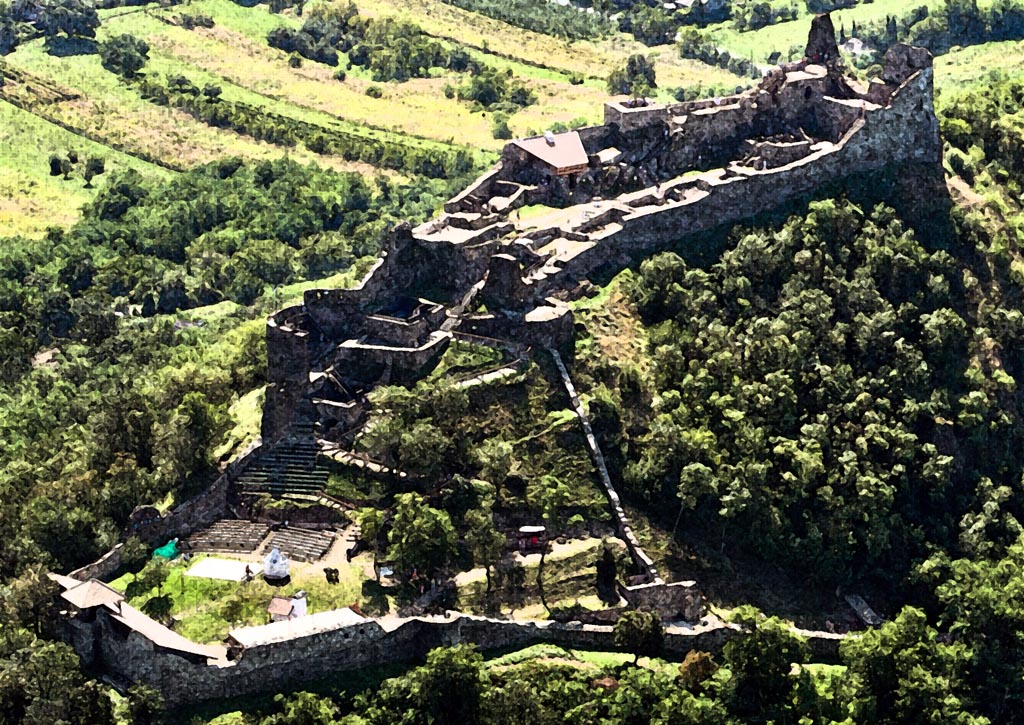[HU:] "Amikor az ember határozott cél felé tart...nagyon fontos, hogy az útnak is szenteljen figyelmet. Az út az, amely mindig megmutatja a célba érés legjobb módját, s útközben gazdagodunk. (...) Az lehet jobb vagy rosszabb, attól függően, melyik utat választjuk az eléréséhez, és hogy miképpen járjuk ezt az utat. Ezért olyan fontos ...felfedezni a titkokat mindabban, amit megszokásból, mindennap látunk, de amelyeket rutinból képtelenek vagyunk észrevenni."
Paulo Coelho fenti idézete motiválta ezt a geoláda sorozatot, amely sajátságos módon mutatja be Magyarországot. A megyénként elrejtett 26-26 láda csak a célt határozza meg, de a közöttük meghúzódó út megtalálása és az utazás az, aminek során felfedi igazi arcát az adott megye. Azért reméljük, hogy a megtalált ládák is felfednek eddig még nem ismert, "kiskincseket" az adott megyében.
A ládákban található négy karakteres jelszavakra a játék során szükséged lesz, ne felejts el megjegyezni azokat!
[EN:]"When you are moving toward an objective...It is very important to pay attention to the road. It is the road that teaches us the best way to get there, and the road enriches us as we walk its length. (...) It will turn out to be better or worse depending on the route you choose to reach it and the way you negotiate that route. That’s why...it extracts from what we are used to seeing every day the secrets that because of our routine, we never see."
Paulo Coelho's quote above motivated this geocache serie, which presents Hungary its own peculiar way. The 26-26 caches hidden in the counties only determines the goal, but the travel the road among them will reveal the true face of the given county. We hope that the found caches can reveal previously unknown, "little treasures" in a given county.
The four-character passwords in the geocaches are necessary in the game, do not forget remember them.

[HU:] Szigligeti Vár
A vár kalandos története a 13. században kezdődött. Bencések építették a legrégebbi falakat a tatárjárás után, az 1260-62 években. Gyors fejlődésében és bővülésében nagy szerepet játszott a szerencsés környék, a kőfejtők, a kőművesek és munkaerőben sem volt hiány.
Igaz jelentőséggel a török korban, a végvárrendszer kiépülésével bírt a vár. A gyakori török támadásban helytállt, sikerült megakadályozni, hogy a török kiterjeszthesse hódoltsági területét. A török birodalom hanyatlásával a vár jelentősége is fokozatosan csökkent. Nem csak a fejlesztése, de az állagmegóvási munkálatai is sorra elmaradtak. Így nagyon hamar korszerűtlenné vált.
Végső pusztulása a 17.század legvégén kezdődött, amikor egy villámcsapás utáni tűzvészben leégett az okleveleivel és dokumentumaival együtt. Végső sorsát Lipót császár 1702-ben kiadott rendelete pecsételte meg, mikor elrendelte a magyarországi várak legnagyobb részének tervszerű lerombolását.
Rákóczi szabadságharc idején a kuruc csapatok már nem is használták, ami romos állapotára utal. Utolsó tulajdonosuk az Eszterházy-ak voltak a II. világháború végéig.
[EN:] Castle of Szigliget
The adventurous history of the castle began in the first half of the 13th century. After terrible devastation of the Mongol invasion Béla IV. decided to build up stone castles across the country, since only they could ward off the power of a similar attack. However the castle was much smaller than ruins can be seen today, in later centuries it was expanded with construction to the present size. Local quarries, lime burners, masons, the craftsmen and serfs living in the neighboring Benedictine estates might greatly contributed to the rapid build of the castle.
This time Turkish attacks were common, but Magyar Bálint the captain of Szigliget and Fonyód behaved legendary. He reflected many Turkish attacks and he defended not only Fónyód and Szigliget, but in Veszprém and Tihany he prevented that the Turkish could extend the borders of their Empire.
The strategic importance of the castle increasingly dwindled with the decline of the Turkish power. After the termination of the occupation Szigliget had no more role in the protection of the country. The destruction of castle began at the end of the 17th century when the majority caught fire and burned down due to lightning on a stormy day. Certifications, statements and other records relating to castle were perished, which were stored there. Destruction was accelerated by the implementation of Emperor Lipót's Regulation issued in 1702: Referring to the peace of the country and the difficult financial situation the Emperor ordered the purposeful destruction of most of the castles in Hungary.
During the war of independence of Rákóczi the Kuruc armies invading Transdanubium had not use the castle, which implies unusable condition of the castle.
Source: www.szigligetivar.eu